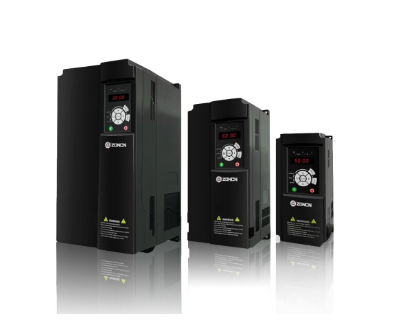Voltage standards such as 12V and 24V generally refer to direct current (DC) systems commonly used in automobiles, ships, and low-voltage applications. In contrast, 220V/230V refers to alternating current (AC) used in home electrical systems. A 12V to 220V inverter is a power conversion device that is typically used to convert low-voltage direct current (such as 12V from a car battery) to high-voltage alternating current (such as 220V used by home appliances). The components of a frequency converter are as follows:
1. Transformer: The transformer in the inverter is used to convert the input low voltage (12V) to the required high voltage (220V). The working principle of the transformer is based on the principle of electromagnetic induction, which changes the voltage by changing the number of turns of the coil.
2. Inverter Circuit: The inverter circuit in the inverter is used to convert DC power to AC power. This is usually achieved by using a group of power switching elements (such as transistors or field effect transistors) that switch in a specific pattern to produce an AC output.
3. Control Circuit: The control circuit is used to monitor the input voltage and output voltage and adjust the operation of the inverter to ensure stable output voltage and frequency. It usually includes components such as sensors, feedback loops and microcontrollers.
4. Protection Circuit: The inverter usually also contains some protection circuits to protect the device from problems such as overload, short circuit and overheating. These protection circuits can include fuses, overcurrent protectors, overvoltage protectors and temperature sensors.
Its working principle is basically completed in two major steps:
DC-DC Conversion: First, the inverter converts the input low voltage DC (12V) to an intermediate voltage DC. This is usually achieved through a DC to DC (DC-DC) converter, which includes a switching power supply, such as a pulse width modulation (PWM) controller. The PWM controller controls the output voltage by adjusting the switching frequency and duty cycle of the switch. This step can convert the input voltage to an intermediate voltage suitable for the subsequent steps.
DC-AC Conversion: Next, the intermediate voltage DC is converted to the required AC voltage (such as 220V). This is usually achieved through an inverter circuit that converts DC power to AC power. The inverter circuit usually includes a group of switching elements (such as transistors or field effect transistors) and an output transformer. The switching elements switch in a specific way according to the input control signal, thereby generating an AC output voltage with a nearly sinusoidal waveform.
Through these two steps, the inverter converts low voltage DC to high voltage AC, which can supply devices such as household appliances that require 220V AC.
- Outdoor Activities and Camping: During camping or outdoor activities, the inverter can be connected to the car battery or portable battery pack to provide 220V AC power for charging cameras, stereos, mobile refrigerators and other devices.
- Emergency Backup Power: In the event of a power outage or emergency, the inverter can be connected to the vehicle battery or other backup power source to provide temporary power supply for household appliances (such as lamps, refrigerators, communication equipment).
- Solar and Wind Power Systems: In solar or wind power generation systems, inverters are used to convert DC power to AC power to supply power needs for home or commercial use.
- Mobile Office: Inverters can be used in mobile office places in vehicles to convert power from the vehicle battery to AC power suitable for devices such as laptops, printers, chargers, etc.
- Electronic Equipment Testing: During electronic equipment testing and development, the inverter can provide a standard 220V AC power supply for testing and verifying the performance and compatibility of the equipment.
The application range of 12V to 220V inverter is very wide, covering many different fields and scenarios, providing users with a convenient power conversion solution.

